| Voltamons Productions |
 |
|
|
 |
| Routes for adventurous travelers |
 |
|
|
 |
|
| CHAPTER 1: «Discovering the essence of Africa»
|
|
|
|
The first chapter gives a quick idea of the amazing stories and images that the rest of the series has to offer, since the expedition enters the continent in Morocco until the end of the journey in Benin. It is a 30 minutes summary of all the different adventures and people that the group comes across during this long journey throughout Western Africa.
|
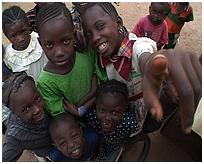
|
| CHAPTER 2: «Morocco: Sahara's door»
|
|
|
|
The route starts in the city of Nador, where the group arrives after having taken a ferry from Spain. Once in Morocco the expedition visits Marrackech and Essaouira and finally shares a nice Tagin based dinner at Fatima's house, a Moroccan woman from Sidi Ifni. Before heading off to Western Sahara, the six travelers stop at Guelmin's market to buy some grocery and provide themselves with enough food to enter the desert.
|
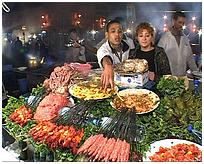
|
| CHAPTER 3: «Living with saharawi people»
|
|
|
|
This chapter takes place in the Saharan land. The expedition arrives at Dakhla, where it temporally parks the truck and takes a land rover to enter the desert. This camouflage helps the group dodge the Moroccan law, which prohibits travellers from off-roading. This is the only way to get in touch with Saharan people still living in this land.
|
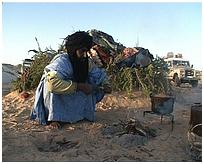
|
| CHAPTER 4: «Lost between desert and sea»
|
|
|
|
After crossing Western Sahara, the expedition enters Mauritania and visits the two main cities of the country: Nouadhibou and Nouakchott, the capital. The ship cemetery, the drying fish area and the arrival of fishermen at dawn are the main attractions of these cities. But, overall, the time trial drive against the rising of the tide on the road that passes between the sea and the sand-dunes has made of this country a unique destination for adventurous travelers.
|
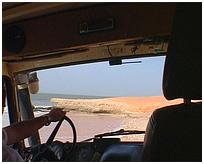
|
| CHAPTER 5: «Discovering the Banc d'Arguin National Park»
|
|
|
|
This chapter's route goes on along Mauritania. After being waiting amongst sand-dunes until the tide uncovered the sand road, the group retakes the path on the sea shore heading off to the Banc d'Arguin National Park. This Natural Park hosts the largest concentration of wintering waders in the world and one of the most diversified communities of nesting piscivorous birds.
|
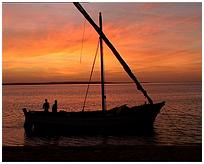
|
| CHAPTER 6: «From Mauritania to Mali: Entering the heart of West Africa»
|
|
|
|
In this chapter the group first visits Tergit's oasis in Mauritania before entering Mali, the biggest country in West Africa. The expedition heads off to Bamako, a polluted and loud capital that gathers the 10% of Mali's population. The goal of the travelers is to reach the Dogon lands. On the way, they stop at San, a village dedicated on the whole to the art of Bogolan. It is a unique opportunity to observe how these traditional clothes are made.
|
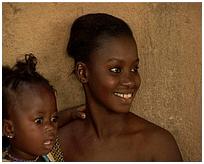
|
|
|
|
 |
| CHAPTER 7: «Mali: Dogon country, land of cultivation»
|
|
|
|
The route goes on northbound to Djenne, where the group enjoys the beauty of the Big Mosque, which is considered the most important monument in Mali. It is from this city that the expedition starts the route to the Dogon lands. The Dogon culture has always been considered mysterious and has attracted anthropologists and cosmologists from around the world. Dogons' lifestyle is based on farming and the mill is the main product of their diet.
|
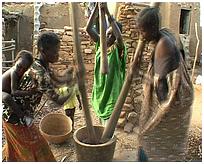
|
|
|
|
 |
| CHAPTER 8: «Mali: From Mopti to Timbucktu»
|
|
|
|
In this chapter the group goes on exploring the wonders of Mali. The route starts in Mopti to reach Timbuktu: the lost town of the desert. Mopti is a city that lives on the Niger. The Niger bathes the country and has converted Mopti into the most important fluvial harbor of Mali. But the expedition's goal is getting to know Timbuktu. Making way into this town is nonsense unless the traveler is aware of the legend that involves the town. It can be disappointing if one expects to find any proof of the myth of Timbuktu.
|
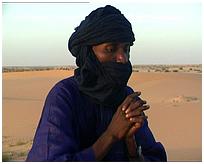
|
|
|
|
 |
| CHAPTER 9: «From Mali's mountains to the rythm of Burkina Faso»
|
|
|
|
This chapter takes place in two countries. The group ends the route through Mali in Hombori, the site of the highest mountains in Mali: Fatima's Hand and Hombori Tondo (1155 m). In Hombori the expedition enjoys the cattle market, which serves as a meeting point for the different ethnic groups of the area. The expedition sees off Mali and enters Burkina Faso to meet its capital (Ouagadougou), the town of the seven mosques (Bani) and Bobo-Dioulasso, in the South.
|
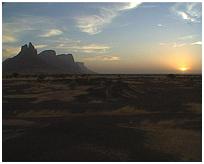
|
|
|
|
 |
| CHAPTER 10: «Burkina Faso. Finding the Lobi»
|
|
|
|
There is no doubt that nights in Bobo-Dioulasso are the livelier in the country. This is the center for music in Burkina. People gather periodically to hear music groups from all over West Africa. It is the siege of the "balaphone", symbol of African music together with the "djembes". In this town, the group is invited to attend a baptism celebration. Bobo-Dioulasso is the starting line to reach the authentic jewel of Burkina: the Lobi Country. The lobi is one of the best preserved ethnic groups in all western africa, characterized by its sukalas, their fortified, castle-like homes.
|
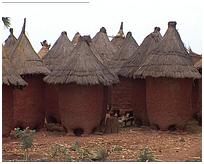
|
|
|
|
 |
| CHAPTER 11: «Ghana: living amongst the crowd»
|
|
|
|
Ghana is a tiny country but has one of the highest population densities in all Africa. Kumasi, the capital of the ancient Ashanti kingdom is a clear example of this overcrowding. The group will also have the chance to know Ghana's handcrafting, which is renowned by the kente cloth weaving, the typical clothing of the Ashanti people. The group will finish the route by visiting Ghana's central region and the different forts along the Gold Coast, testimonies of the colonial period and slave trading.
|
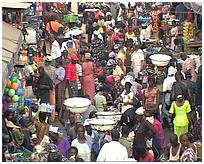
|
|
|
|
 |
| CHAPTER 12: «Togo: the value of a smile»
|
|
|
|
Togo is one of the few countries with its capital, Lome, on the border. It is a lively, popular and cozy town. The expedition aims to get in touch with the Tamberma people. Together with the Lobi from Burkina Faso, the Tamberma are one of the best preserved ethnic groups in this part of Africa. It is with the Tamberma people that the group will live an unforgettable story, the story of the Tamberma child, which will bring the travelers to the truth about the Togolese hospitals.
|
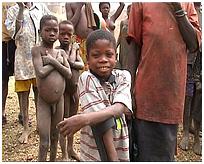
|
|
|
|
 |
| CHAPTER 13: «Benin, live on water»
|
|
|
|
The group reaches the end of this adventure in Benin, going along the "slaves route" until arriving at Cotonou, which is the economic driving force of the country although it is not the official capital. Cotonou is a populous, chaotic and impersonalized city. Dantokpa market is one of the biggest in all French-speaking Africa. Much more quiet will be the trip that the group will make to the "lake villages", which have been literally built on water.
|
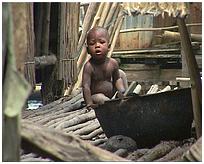
|
|
|



